How to round to the nearest hundredth in Excel
You can watch a video tutorial here.
Excel is frequently used for calculations and has many functions to help with basic mathematical operations. Rounding off a number is an operation that you will need to do frequently when working with formulas. There are several functions and formatting options available to round numbers up or down. To round a number to the nearest hundredth is to round it to two decimal places. This is useful for numbers that have many decimal places.
In Excel, you can use any one of the functions described below. These ROUND, ROUNDUP, and ROUNDDOWN functions use positive numbers to round off decimal places. To round numbers to the left of the decimal point, negative numbers are used.
- ROUND(): this rounds the number up or down to the specified number of digits
- Syntax: ROUND(number, num_digits)
- number: the number to be rounded
- num_digits: the number of decimal places to which the number is to be rounded
- Syntax: ROUND(number, num_digits)
- ROUNDUP(): this rounds the number up to the specified number of digits
- Syntax: ROUNDUP(number, num_digits)
- number: the number to be rounded
- num_digits: the number of decimal places to which the number is to be rounded
- Syntax: ROUNDUP(number, num_digits)
- ROUNDDOWN(): this rounds the number down to the specified number of digits
- Syntax: ROUNDDOWN(number, num_digits)
- number: the number to be rounded
- num_digits: the number of decimal places to which the number is to be rounded
- Syntax: ROUNDDOWN(number, num_digits)
- MROUND()
- Syntax: MROUND (number, multiple)
- number: this is the number to be rounded
- multiple: the multiple to which the number is to be rounded
- Syntax: MROUND (number, multiple)
Option 1 – Use the ROUND() function
Step 1 – Create the formula
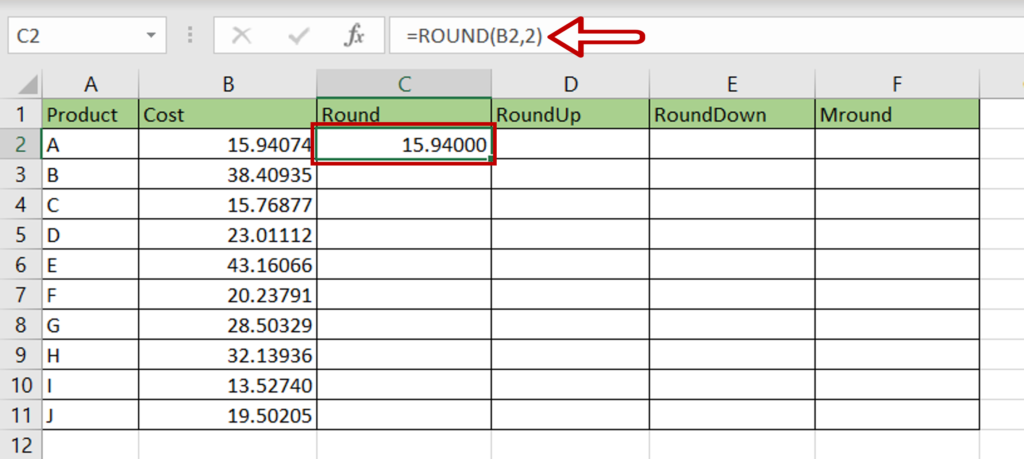
- Select the destination cell
- Type the formula using cell references:
=ROUND(Cost,2)
- Press Enter
Step 2 – Copy the formula
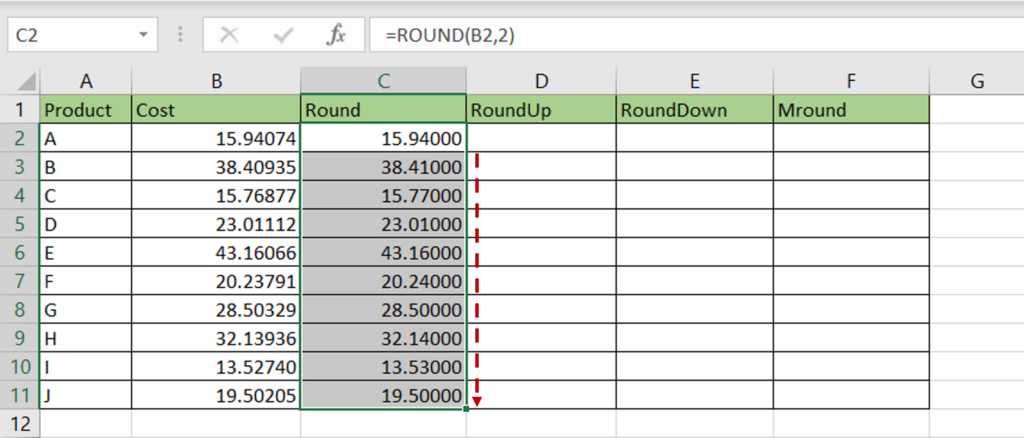
- Using the fill handle from the first cell, drag the formula to the remaining cells
OR
- Select the cell with the formula and press Ctrl+C or choose Copy from the context menu (right-click)
- Select the rest of the cells in the column and press Ctrl+V or choose Paste from the context menu (right-click)
- The numbers are rounded (either up or down, depending on the value of the number), to the nearest hundredth
Option 2 – Use the ROUNDUP() function
Step 1 – Create the formula
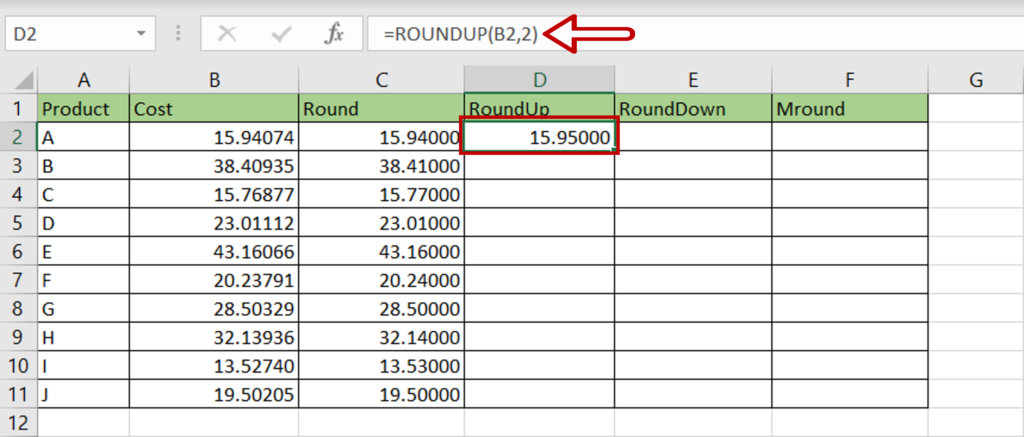
- Select the destination cell
- Type the formula using cell references:
=ROUNDUP(Cost,2)
- Press Enter
Step 2 – Copy the formula
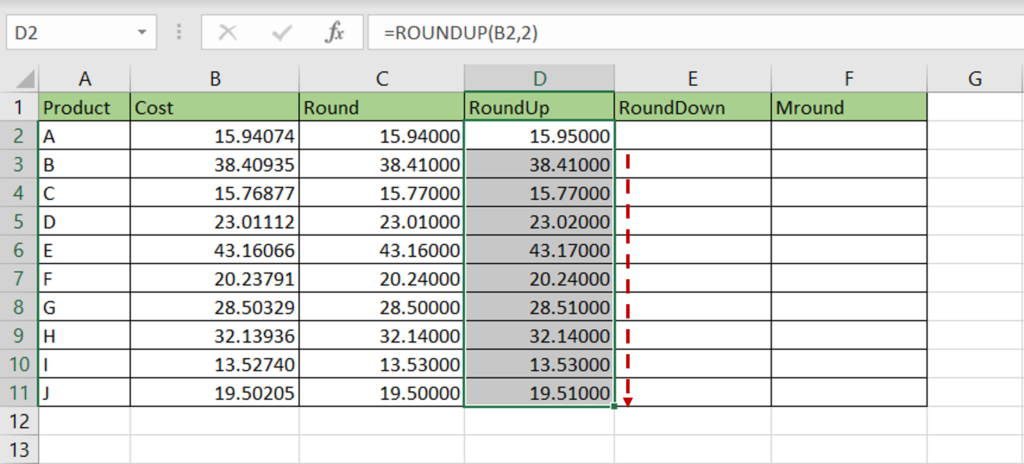
- Using the fill handle from the first cell, drag the formula to the remaining cells
OR
- Select the cell with the formula and press Ctrl+C or choose Copy from the context menu (right-click)
- Select the rest of the cells in the column and press Ctrl+V or choose Paste from the context menu (right-click)
- The numbers are rounded up to the nearest hundredth
Option 3 – Use the ROUNDDOWN() function
Step 1 – Create the formula
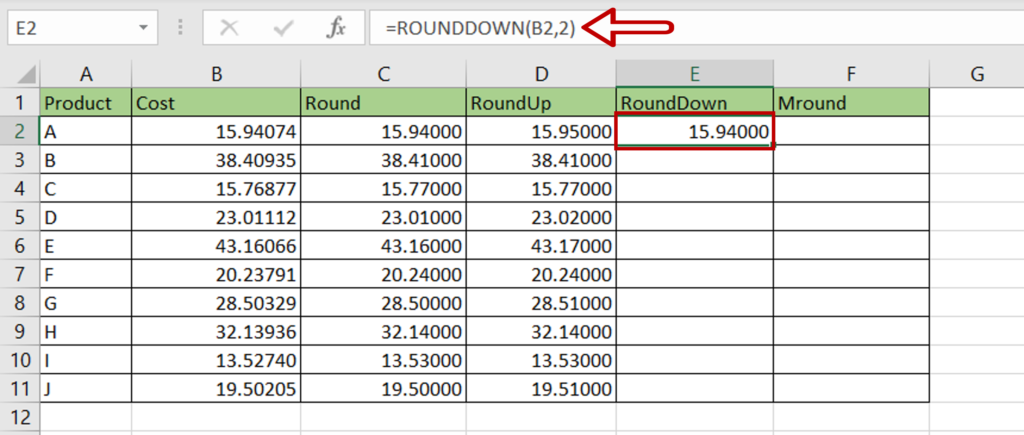
- Select the destination cell
- Type the formula using cell references:
=ROUNDDOWN(Cost,2)
- Press Enter
Step 2 – Copy the formula
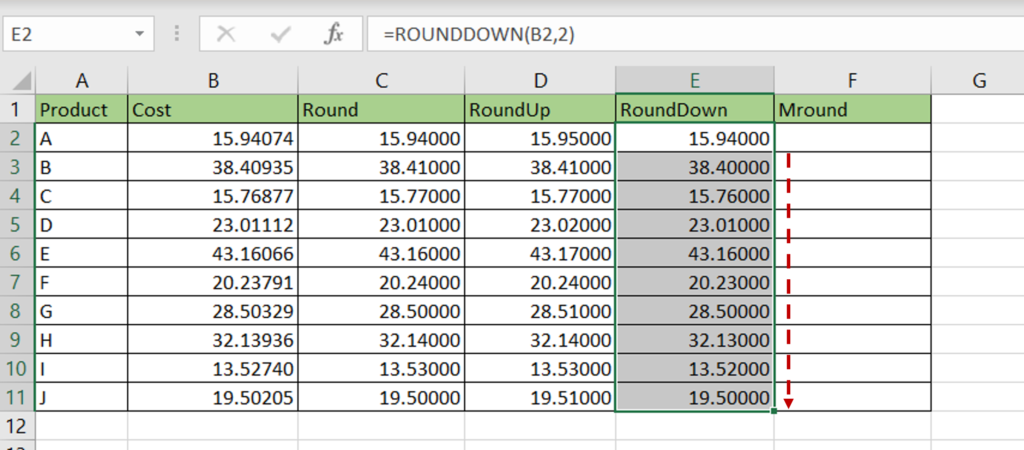
- Using the fill handle from the first cell, drag the formula to the remaining cells
OR
- Select the cell with the formula and press Ctrl+C or choose Copy from the context menu (right-click)
- Select the rest of the cells in the column and press Ctrl+V or choose Paste from the context menu (right-click)
- The numbers are rounded down to the nearest hundredth
Option 4 – Use the MROUND() function
Step 1 – Create the formula
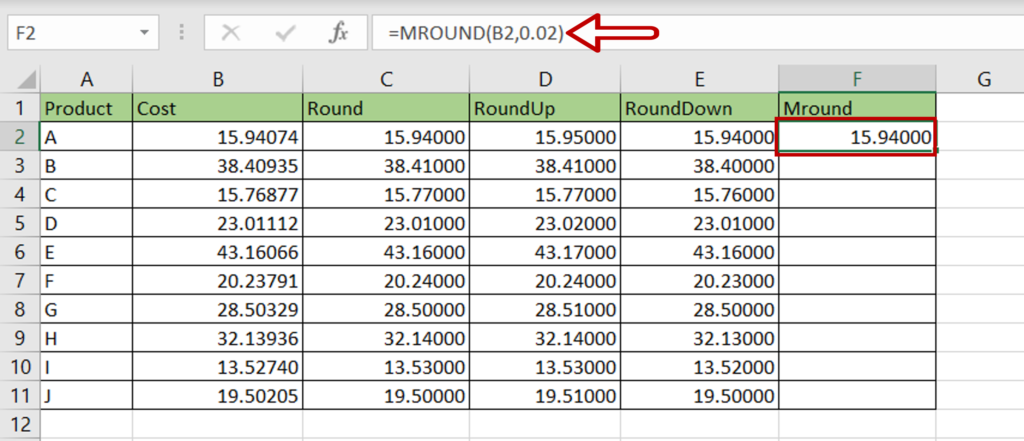
- Select the destination cell
- Type the formula using cell references:
=MROUND(Cost,.02)
- Press Enter
Step 2 – Copy the formula
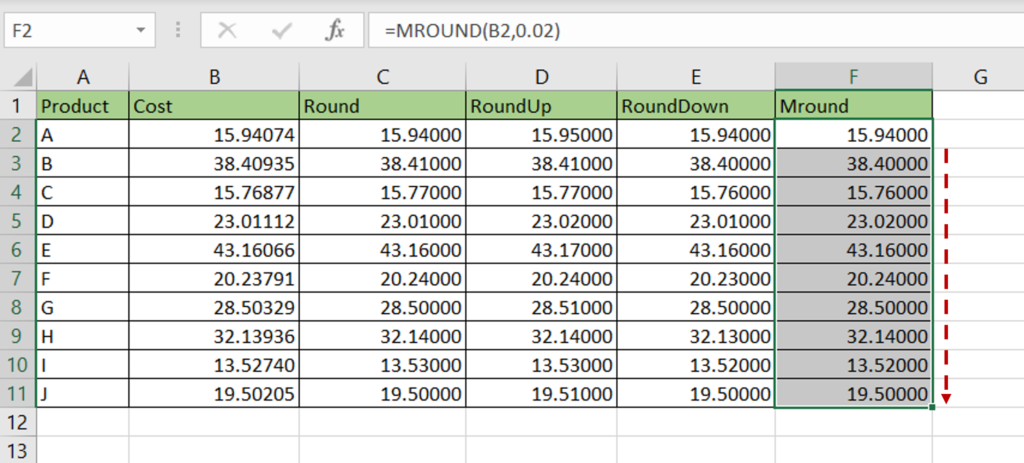
- Using the fill handle from the first cell, drag the formula to the remaining cells
OR
- Select the cell with the formula and press Ctrl+C or choose Copy from the context menu (right-click)
- Select the rest of the cells in the column and press Ctrl+V or choose Paste from the context menu (right-click)
- The numbers are rounded up or down to the nearest hundredth



